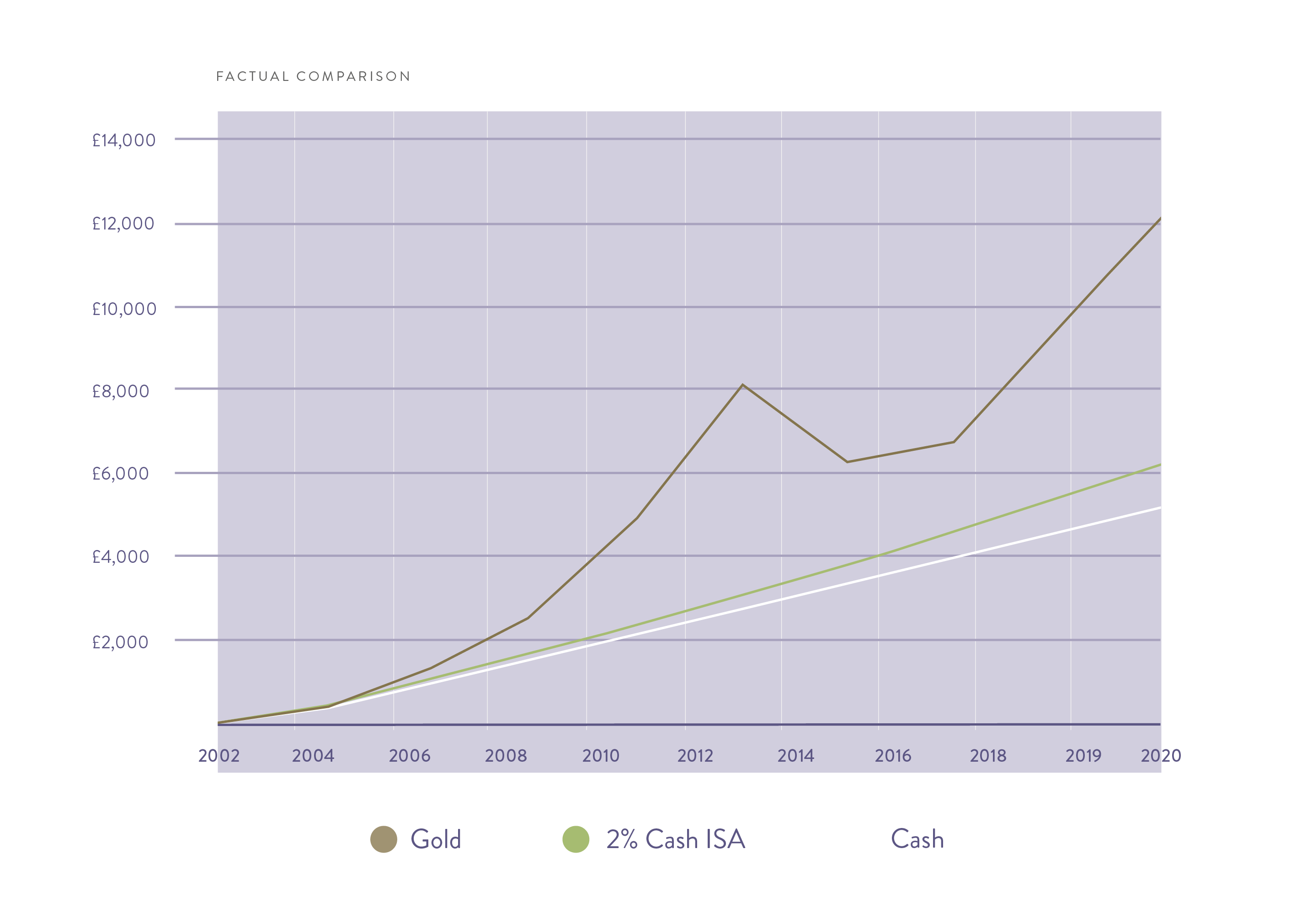This year, The Royal Mint has experienced unprecedented interest from new customers in relation to digital gold savings. In this article, we explore the benefits of this new way of accumulating gold, and compare it to a more traditional method of saving.
Traditional saving methods
ISAs (Individual Savings Accounts) have been the traditional method of saving for many individuals for the last 20 years. They come in various forms, including; cash ISAs, junior cash ISAs, stocks and shares ISAs and lifetime ISAs, and they provide savers with certain degrees of taxation benefits. Many people use ISAs because they are generally low risk; your money (up to a certain threshold) is kept in a bank or building society and no tax is paid on the interest that money accrues. ISAs are also covered by the Financial Services Compensation Scheme (FSCS), which protects savings up to £85,000.
Recently, however, low interest rates and rising inflation have hit traditional savings accounts such as ISAs. Whereas, economic uncertainty and political volatility has driven demand for gold globally, causing the value of gold to increase in response.
The rise of digital gold savings programmes
In recent years, there has been a rise in the number of people opting for digital gold savings accounts globally. Although not covered by the FSCS, this method of investing is particularly popular amongst individuals who wish to diversify their overall savings portfolio and those who wish to include gold within their holding without taking physical delivery of it.
To allay concerns around direct ownership, digital gold should always be backed by real, physical gold bars. By buying ‘digitally’ it allows you to buy a fraction or a portion of those physical gold bars at a time. At The Royal Mint, all of our digital gold is backed by LBMA-approved cast gold bars. The bars are fully insured and stored at our world-class vault facility, which is audited regularly by an independent third party.
Long-term performance
In terms of performance, gold has achieved substantial gains over the last decade, providing a better yield than traditional savings options. Consider this; if you’d invested £25 a month in gold over 18 years between 2002 and 2020, you would have £13,393. Compare that with putting the same amount into a 2% cash ISA – you would have just £6,493 – or simply setting it aside with no interest at all – £5,400*.

*Calculated using the last business day of 2019 and the first calendar day of 2020. Based on interest on the cash ISA being paid yearly in month 12, and that money is saved or invested on the first business day of the month. These figures are exclusive of additional precious metal purchase & storage fees.
Regular payments
In the same way as regular cash ISAs, many gold savings programmes allow you to set up regular, recurring payments into your precious metals account. This allows you to buy and save gold every month as well as making one-off purchases whenever you choose. The minimum amount for the monthly payments is usually relatively small; at The Royal Mint it starts at just £25.
Tax benefits
Digital gold savings and ISAs both attract various tax benefits but the risks and benefits associated with each are very different. While ISAs can benefit from exemptions in income tax and capital gains tax, gold is VAT free in the UK.
No upper limit
Unlike ISAs (which are capped at £20,000 per tax year) there is no upper limit to the amount of digital gold you can purchase. This provides opportunities for investors to take advantage of favourable market conditions whenever they arise.
No contractual tie in
Unlike fixed-term ISAs, which tie you in for a set period of time, digital gold affords you the flexibility to choose exactly when you want to buy and sell. There is no reliance on the banking system or other financial institutions as you are in complete control of the gold that you own.
Redemption
An additional benefit with digital gold savings is that you can choose to sell your precious metal for cash whenever you want. You can also redeem your holdings for physical gold coins and bars if you prefer; although there are usually additional fees associated with this option due to the design and manufacturing costs linked to these products.
Have you considered gold yet?
As rare as it is beautiful, gold has been used as a store of wealth for thousands of years. More recently, demand for investment gold has increased not only amongst individual investors but also amongst central banks, as governments have chosen to safeguard their national reserves.
The Royal Mint has a range of digital savings accounts available to cater for different needs:
- DigiGold: Suitable for individuals who wish to actively trade and save gold at the click of a button.
- Little Treasures: Suitable for parents, grandparents or anyone else who wants to save gold.
- Gold for Pensions: Suitable for those looking to prepare for their future.
Precious metals markets can be volatile – the value of gold may fluctuate dependent on market value. Investing in gold involves a degree of risk which may make it unsuitable for certain people. Before making any investment decision, you may wish to seek advice from your financial, legal, tax and accounting advisers. You should carefully consider the risks associated with investing in gold taking into account your own individual financial needs and circumstances.

